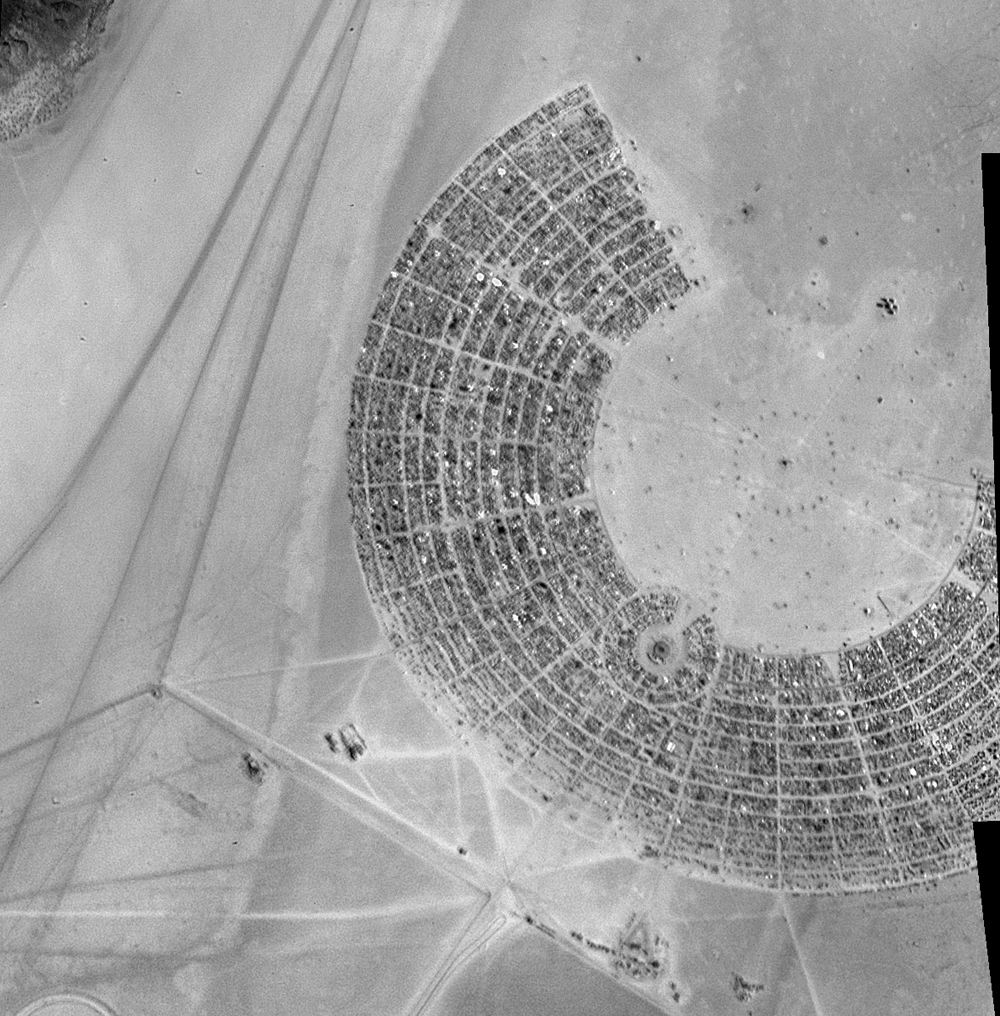Satellite Sees Burning Man Festival From Space

The annual Burning Man festival is in full swing in the Nevada desert, and a tiny European satellite has snapped an overhead shot of the eccentric action.
The European Space Agency's Proba-1 microsatellite took a photo of Burning Man on Thursday (Sept. 1) from an altitude of about 373 miles (600 kilometers). The picture shows campers and tents massed for the annual gathering, which attracts 50,000 people to the Black Rock Desert 120 miles (193 km) north of Reno.
The image was stitched together from four black-and-white photos, each of which has a resolution of about 16 feet (5 meters), European Space Agency (ESA) officials said. [See the satellite photo of Burning Man]
Burning Man is a weeklong art and self-expression festival that meets every year around Labor Day. This year, it runs from Aug. 29 to Sept. 5. Attendance was capped at 50,000, and the event sold out in July.
This year marks the 25th anniversary of the festival, which takes its name from the ceremonial torching of a giant wooden effigy. The event began modestly in 1986, when a handful of friends torched an 8-foot (2.4-m) wooden man on a San Francisco beach.
Burning Man first moved to the Black Rock Desert in 1990, and it has grown greatly over the past two decades. The height of the torched man has grown as well; in 2009, he measured 50 feet (15.2 m) tall, according to the festival's website.
"Proba" stands for "Project for Onboard Autonomy," and Proba-1's two cameras are indeed largely autonomous. The microsatellite, which is less than 3.3 feet on a side (less than 1 cubic meter), launched in October 2001 as an experimental mission.
Breaking space news, the latest updates on rocket launches, skywatching events and more!
Proba-2, which focuses on solar monitoring, was launched in November 2009. Two other Probas are in preparation, ESA officials said. Proba-3 will test formation flying, and Proba-V will monitor global vegetation.
You can follow SPACE.com senior writer Mike Wall on Twitter: @michaeldwall. Follow SPACE.com for the latest in space science and exploration news on Twitter @Spacedotcom and on Facebook.

Michael Wall is a Senior Space Writer with Space.com and joined the team in 2010. He primarily covers exoplanets, spaceflight and military space, but has been known to dabble in the space art beat. His book about the search for alien life, "Out There," was published on Nov. 13, 2018. Before becoming a science writer, Michael worked as a herpetologist and wildlife biologist. He has a Ph.D. in evolutionary biology from the University of Sydney, Australia, a bachelor's degree from the University of Arizona, and a graduate certificate in science writing from the University of California, Santa Cruz. To find out what his latest project is, you can follow Michael on Twitter.
